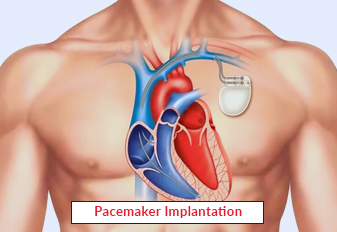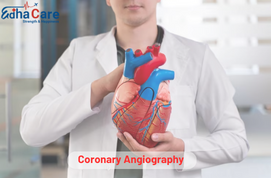Pacemaker Implantation

Pacemaker implantation is a medical procedure used to treat certain heart rhythm disorders, specifically bradycardia (a slow heart rate) or other electrical conduction abnormalities. A pacemaker is a small electronic device that helps regulate the heart's electrical activity, ensuring a consistent and appropriate heart rate. In this article, we will explore the concept of pacemaker implantation, its significance, and the procedure involved in this life-enhancing intervention.
Book an AppointmentAbout Pacemaker Implantation
A pacemaker Surgery is a device composed of a pulse generator and one or more leads. The pulse generator houses a battery and electronic circuitry that generates electrical impulses to regulate the heart's rhythm. The leads are thin, insulated wires that deliver the electrical signals from the generator to the heart muscle.
Procedure of Pacemaker Implantation
-
Preoperative Evaluation: Before the pacemaker implantation, a thorough evaluation of the patient's heart condition is conducted. This includes a physical examination, electrocardiogram (ECG), echocardiography, and sometimes additional imaging tests to assess the heart's structure, function, and rhythm.
-
Anesthesia and Incision: Pacemaker implantation is typically performed under local anaesthesia, with the patient awake but sedated. A small incision is made near the collarbone, and a pocket is created to accommodate the pulse generator.
-
Lead Placement: The leads are carefully inserted through a vein and guided to the appropriate chambers of the heart using fluoroscopy (a real-time X-ray imaging technique). The leads are positioned in contact with the heart muscle, and their placement is confirmed by ECG monitoring.
-
Connection and Testing: The leads are connected to the pulse generator, and the entire system is tested to ensure proper functioning. The settings are adjusted to meet the individual patient's needs, taking into account their heart condition and activity level.
-
Closure and Recovery: Once the pacemaker Surgery and leads are securely in place and functioning correctly, the incision is closed using sutures or adhesive strips. Sterile dressings are applied, and the patient is monitored during a short recovery period. Most patients can return home the same day or within a day or two after the procedure.
-
Follow-up Care: Regular follow-up appointments are necessary to monitor the pacemaker's function, adjust settings if needed, and ensure optimal performance. The pacemaker's battery life will be monitored, and periodic generator replacement will be scheduled as required.
Require Assistance?
Get A Quick Callback From Our Healthcare Experts
Other Specilities We Cover

Robotic Heart Bypass Surgery

Heart Bypass Surgery




